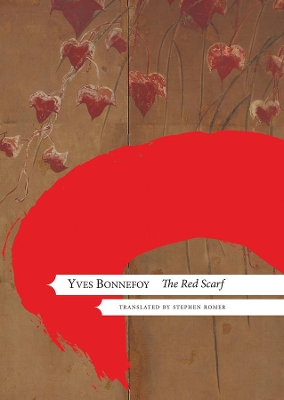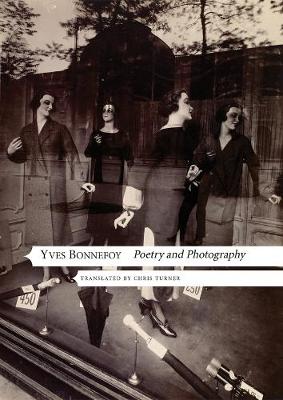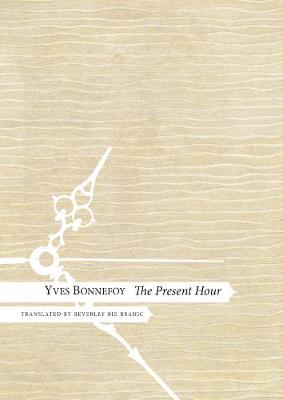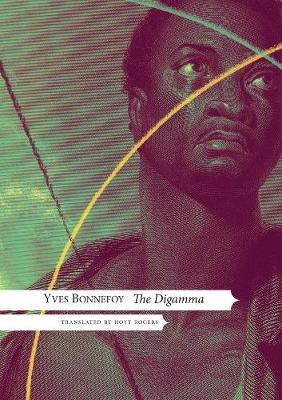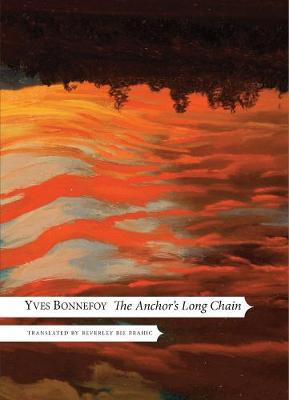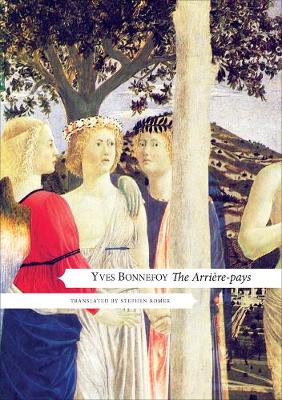The French List - (Seagull titles CHUP)
7 total works
An intensely personal and profoundly moving review of Bonnefoy’s childhood memories.
In December 2015, six months before his death at the age of 93, Yves Bonnefoy concluded what was to be his last major text in prose, L’écharpe rouge, translated here as The Red Scarf. In this unique book, described by the poet as "an anamnesis"—a formal act of commemoration—Bonnefoy undertakes, at the end of his life, a profoundly moving exegesis of some fragments written in 1964. These fragments lead him back to an unspoken, lifelong anxiety: “My most troubling memory, when I was between ten and twelve years old, concerns my father, and my anxiety about his silence.” Bonnefoy offers an anatomy of his father’s silence, and of the melancholy that seemed to take hold some years into his marriage to the poet’s mother.
At the heart of this book is the ballad of Elie and Hélène, the poet’s parents. It is the story of their lives together in the Auvergne, and later in Tours, seen through the eyes of their son—the solitary boy’s intense but inchoate experience, reviewed through memories of the now elderly man. What makes The Red Scarf indispensable is the intensely personal nature of the material, casting its slant light, a setting sun, on all that has gone before.
In December 2015, six months before his death at the age of 93, Yves Bonnefoy concluded what was to be his last major text in prose, L’écharpe rouge, translated here as The Red Scarf. In this unique book, described by the poet as "an anamnesis"—a formal act of commemoration—Bonnefoy undertakes, at the end of his life, a profoundly moving exegesis of some fragments written in 1964. These fragments lead him back to an unspoken, lifelong anxiety: “My most troubling memory, when I was between ten and twelve years old, concerns my father, and my anxiety about his silence.” Bonnefoy offers an anatomy of his father’s silence, and of the melancholy that seemed to take hold some years into his marriage to the poet’s mother.
At the heart of this book is the ballad of Elie and Hélène, the poet’s parents. It is the story of their lives together in the Auvergne, and later in Tours, seen through the eyes of their son—the solitary boy’s intense but inchoate experience, reviewed through memories of the now elderly man. What makes The Red Scarf indispensable is the intensely personal nature of the material, casting its slant light, a setting sun, on all that has gone before.
The international community of letters mourns the recent death of Yves Bonnefoy, universally acclaimed as one of France's greatest poets of the last half-century. A prolific author, he was often considered a candidate for the Nobel Prize and published a dozen major collections of poetry in verse and prose, several books of dream-like tales, and numerous studies of literature and art. His oeuvre has been translated into scores of languages, and he himself was a celebrated translator of Shakespeare, Yeats, Keats, and Leopardi.Poetry and Photography is Bonnefoy's seminal essay on the intricate connections between the two fields as they play out against a background of major works in the history of literature. Bonnefoy is concerned not just with new concepts that photography introduces to the world of images, but also with the ways in which works like Maupassant's "The Night" perpetuate these concepts. A short, critical text on different forms of artistic creation, masterfully translated by Chris Turner, the volume is an invigorating read.
From the publication of his first book in 1953, Yves Bonnefoy has been considered the most important and influential French poet since World War II. A prolific writer, critic, and translator, Bonnefoy continues to compose groundbreaking new work sixty years later, constantly offering his readers what Paul Auster has called "the highest level of artistic excellence." In The Present Hour, Bonnefoy's latest collection, a personal narrative surfaces in splinters and shards. Every word from Bonnefoy is multifaceted, like the fragmented figures seen from different angles in cubist painting-as befits a poet who has written extensively about artists such as Goya, Picasso, Braque, and Gris. Throughout this moving collection, Bonnefoy's poems echo each other, returning to and elaborating upon key images, thoughts, feelings, and people. Intriguing and enigmatic, this mixture of sonnet sequences and prose poems - or, as Bonnefoy sees them, "dream texts" - moves from his meditations on friendship and friends like Jorge Luis Borges to a long, discursive work in free verse that is a reflection on his thought and process.
These poems are the ultimate condensation of Bonnefoy's life in writing, and they will be a valuable addition to the canon of his writings available in English.
These poems are the ultimate condensation of Bonnefoy's life in writing, and they will be a valuable addition to the canon of his writings available in English.
Heralded as one of France's greatest poets, Yves Bonnefoy has been dazzling readers since the publication of his first book in 1953. He remains influential and relevant, continuing to compose groundbreaking new work. Though Bonnefoy recently celebrated his ninetieth birthday, many are calling these past two decades his most impressive yet. His latest book of poetry and prose, The Digamma, fits wonderfully into his impressive oeuvre, offering his signature style of simplistic but powerful language with fresh new grace. A key passage of the title piece of the book depicts the figures of Nicolas Poussin's The Shepherds of Arcadia, which Bonnefoy has identified as crucial to the artist's evolution. The sustained reference to Poussin's iconography serves to ground the text in the lost civilizations of antiquity. Subtly, it brings out the underlying theme of the entire collection-in the ambivalent world we inhabit, being and nonbeing is fundamentally one.
As a leading translator of Shakespeare in France, Bonnefoy's fascination with the master playwright is displayed in "God in Hamlet" and "For a Staging of Othello," two poems in prose which belong to an ongoing series of meditations on the plays. The collection also includes haunting reflections on children, nature, the origins of art, and vanished cultures.
As a leading translator of Shakespeare in France, Bonnefoy's fascination with the master playwright is displayed in "God in Hamlet" and "For a Staging of Othello," two poems in prose which belong to an ongoing series of meditations on the plays. The collection also includes haunting reflections on children, nature, the origins of art, and vanished cultures.
Praised by Paul Auster as "one of the rare poets in the history of literature to have sustained the highest level of artistic excellence throughout an entire lifetime," Yves Bonnefoy is widely considered the foremost French poet of his generation. Proving that his prose is just as lyrical, Rue Traversiere, written in 1977, is one of his most harmonious works. Each of the fifteen discrete or linked texts, whose lengths range from brief notations to long, intense, self-questioning pages, is a work of art in its own right: brief and richly suggestive as haiku, or long and intricately wrought in syntax and thought; and all are as rewarding in their sounds and rhythms, and their lightning flashes of insight, as any sonnet. "I can write all I like; I am also the person who looks at the map of the city of his childhood, and doesn't understand," says the section that gives the book its title, as he revisits childhood cityscapes and explores the tricks memory plays on us.
A mixture of genres - the prose poem, the personal essay, quasi-philosophical reflections on time, memory, and art - this is a book of both epigrammatic concision and dreamlike narratives that meander with the poet's thought as he struggles to understand and express some of the undercurrents of human life. The book's layered texts echo and elaborate on one another, as well as on aspects of Bonnefoy's own poetics and thought.
A mixture of genres - the prose poem, the personal essay, quasi-philosophical reflections on time, memory, and art - this is a book of both epigrammatic concision and dreamlike narratives that meander with the poet's thought as he struggles to understand and express some of the undercurrents of human life. The book's layered texts echo and elaborate on one another, as well as on aspects of Bonnefoy's own poetics and thought.
Widely considered the foremost French poet of his generation, Yves Bonnefoy has wowed the literary world for decades with his diffuse volumes. First published in France in 2008, The Anchor's Long Chain is an indispensable addition to his oeuvre. Enriching Bonnefoy's earlier work, the volume, translated by Beverley Bie Brahic, also innovates, including an unprecedented sequence of nineteen sonnets. These sonnets combine the strictness of the form with the freedom to vary line length and create evocative fragments. Compressed, emotionally powerful, and allusive, the poems are also autobiographical-but only in glimpses. Throughout, Bonnefoy conjures up life's eternal questions with each new poem. Longer, discursive pieces, including the title poem's meditation on a prehistoric stone circle and a legend about a ship, are also part of this volume, as are a number of poetic prose pieces in which Bonnefoy, like several of his great French predecessors, excels. Long-time fans will find much to praise here, while newer readers will quickly find themselves under the spell of Bonnefoy's powerful, discursive poetry.
Praise for Bonnefoy "Few exceptions of contemporary French letters deserve the attention of the reading public in America more than Bonnefoy...His writings are an important lighthouse on the contemporary cultural coastline."-Hudson Review "Bonnefoy's poems, prose, texts, and penetrating essays have never ceased to stimulate both the writing of French poetry and the discussion of what its deepest purpose should be...He is one of the rare contemporary authors for whom writing does not-or should not-conclude in utter despair, but rather in the tendering of hope."- France Magazine
Praise for Bonnefoy "Few exceptions of contemporary French letters deserve the attention of the reading public in America more than Bonnefoy...His writings are an important lighthouse on the contemporary cultural coastline."-Hudson Review "Bonnefoy's poems, prose, texts, and penetrating essays have never ceased to stimulate both the writing of French poetry and the discussion of what its deepest purpose should be...He is one of the rare contemporary authors for whom writing does not-or should not-conclude in utter despair, but rather in the tendering of hope."- France Magazine
Since the publication of his first book in 1953, Yves Bonnefoy has become one of the most important French poets of the postwar years. At last, we have the long-awaited English translation of his celebrated work "L'Arriere-Pays", which takes us to the heart of his creative process and to the very core of his poetic spirit. In his poem "The Convex Mirror," Bonnefoy writes: "Look at them down there, at that crossroads, / They seem to hesitate, then go on." The idea of the crossroads haunts Bonnefoy's work, as he is troubled by the idea that the path not taken may lead to the arriere-pays, a place of greater plenitude, and of more authentic being - an "elsewhere in the absolute." Seized by this fear that what he terms "presence" exists always somewhere else, a little further on, Bonnefoy here sets out on a labyrinthine quest to find traces of this "original place," which he locates not only in objects of knowledge and experience as diverse as the deserts of Asia, a hill fort in India, a church in Armenia, and the paintings of Piero della Francesca but also, crucially, in the undivided intensity of his experiences as a child.
Written with a visionary grace, "The Arriere-Pays" is a spiritual testament to art, philosophy, and poetry. Enriched by a new preface by the poet, this volume also includes three recent essays in which he returns to his original account of an ethical and aesthetic haunting, one that recounts the struggle between our instinct to idealize - what he deems our eternal Platonism - and the equally strong need to combat this and to be reconciled with our nature as finite beings, made of flesh and blood, in the world of the here and now.
Written with a visionary grace, "The Arriere-Pays" is a spiritual testament to art, philosophy, and poetry. Enriched by a new preface by the poet, this volume also includes three recent essays in which he returns to his original account of an ethical and aesthetic haunting, one that recounts the struggle between our instinct to idealize - what he deems our eternal Platonism - and the equally strong need to combat this and to be reconciled with our nature as finite beings, made of flesh and blood, in the world of the here and now.
